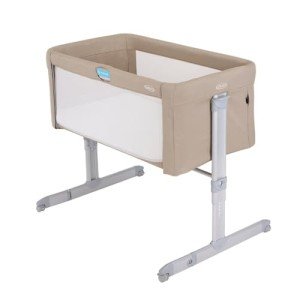Understanding Co-Sleeper Cribs: A Comprehensive Guide for New Parents
In the ever-evolving landscape of infant sleep services, co-sleeper cribs have actually gathered considerable attention amongst new parents. These specialized cribs offer an unique bridge between co-sleeping and safe sleep practices, offering advantages that resonate with both caregivers and infants. This article looks into the intricacies of co-sleeper cribs, describing their features, advantages, factors to consider, and addressing common concerns to guide parents in making an informed choice.
What is a Co-Sleeper Crib?
A co-sleeper crib, likewise known as a bedside sleeper, is a type of crib designed to safely attach or sit next to an adult bed. It allows infants to sleep near their parents without the dangers typically associated with adult bed-sharing. These cribs are available in different designs, however a lot of share a crucial function: one side that is lower, making it possible for easy reach to the baby while keeping them in their own designated sleeping space.
Key Features of Co-Sleeper Cribs
- Safe Attachment: Designed to securely attach to the adult bed, guaranteeing stability.
- Adjustable Height: Height modification alternatives for smooth placing next to the adult mattress.
- Breathable Mesh Sides: Often equipped with breathable mesh sides to improve airflow.
- Compact Design: Takes up less space than traditional cribs, making them perfect for small spaces.
- Portable Options: Many co-sleeper cribs are light-weight or collapsible, permitting easy motion and travel.
Advantages of Using a Co-Sleeper Crib
Co-sleeper cribs present numerous benefits that attract new parents, including:
- Enhanced Bonding: Proximity promotes bonding and can alleviate nighttime feedings and soothing.
- Simplified Nighttime Feeding: Parents can easily feed or relieve their baby without needing to get out of bed.
- Minimized Risk of Bed-Sharing Hazards: Co-sleepers produce a safer environment than standard bed-sharing, decreasing the risk of suffocation and falls.
- Encouragement of Independent Sleep: Infants have their own sleep space, which promotes independent sleeping habits.
Considerations When Choosing a Co-Sleeper Crib
While co-sleeper cribs provide many benefits, there are also a number of factors to consider that parents need to evaluate before making a purchase:
- Safety Standards: Always ensure that the crib complies with existing security regulations offered by companies such as the Consumer Product Safety Commission (CPSC).
- Size Compatibility: Measure the adult bed to guarantee the co-sleeper will fit safely and easily alongside it.
- Alleviate of Use: Look for models that assist in easy operation and accessibility, especially throughout nighttime.
- Convertible Options: Some co-sleepers provide the versatility to transform into a standard crib once the kid outgrows them, which can be an affordable option.
Top Co-Sleeper Cribs on the marketplace
To help navigate the abundance of options available, here's a table showcasing some popular co-sleeper cribs together with their standout functions:
| Brand | Design | Functions | Rate Range |
|---|---|---|---|
| Arm's Reach | Ideal Arc Crib | Adjustable height, detachable side | ₤ 150 - ₤ 230 |
| Babybay | Initial Co-Sleeper | Made from sustainable wood, includes mattress | ₤ 240 - ₤ 300 |
| Chicco | Next2Me Magic | Easy side access, foldable design | ₤ 200 - ₤ 280 |
| Cuddle Me | Organic Co-Sleeper | Soft, comfortable shapes; portable | ₤ 120 - ₤ 180 |
| HALO | BassiNest | 360-degree swiveling, height-adjustable | ₤ 250 - ₤ 350 |
Tips for Using a Co-Sleeper Crib
- Positioning: Place the co-sleeper beside the bed at the very same height level for safety.
- Follow Safe Sleep Practices: Ensure the crib is set up according to guidelines to reduce dangers. This includes avoiding loose bed linen and keeping the bed mattress company.
- Routinely Check Security: Periodically inspect the attachment in between the co-sleeper and the adult bed to ensure it remains safe and stable.
Often Asked Questions (FAQs)
1. Are co-sleeper cribs safe?Yes, when
utilized according to the maker's instructions and safety standards, co-sleeper cribs are considered a safe option to conventional bed-sharing.
2. The length of time can my baby use a co-sleeper crib?Most co-sleeper cribs are designed for infants approximately 5-6 months old, however inspect specific item requirements for age and weight limits. 3. Do co-sleeper cribs feature mattresses?Many co-sleeper cribs include consisted of mattresses, however verify this before purchase. Ensure any extra bed mattress fulfills safety standards. 4. Can a co-sleeper crib be utilized for twins?There are co-sleeper cribs created for twins, however these models may be less typical. Always check the size and weight limitations. 5. Must I use a co-sleeper crib for naps?Absolutely! Co-sleepers work well for both nighttime sleeping and naps, supplying a constant sleep environment for infants. Co-sleeper cribs use an effective and safe compromise
for new parents eager to keep their infant close while keeping a safe sleeping environment. By understanding their features, advantages, and
security considerations, parents can make informed choices that cater to their family's requirements. Whether Bedside Crib For Babies searching for convenience throughout nighttime feedings or a way to construct a strong early bond, a co-sleeper crib may simply be the right choice for you and your youngster.

